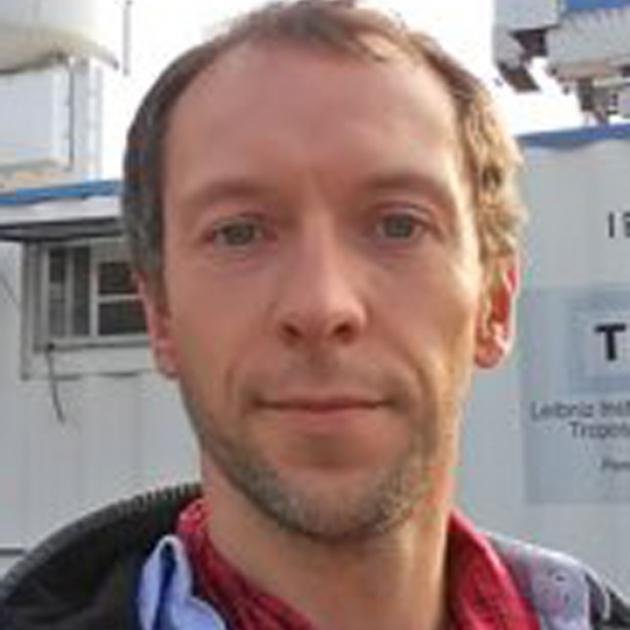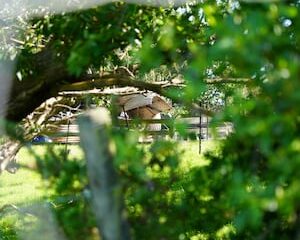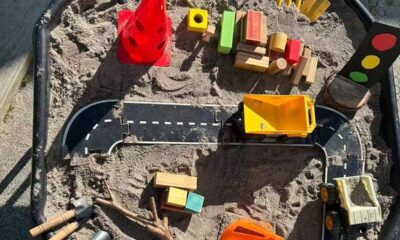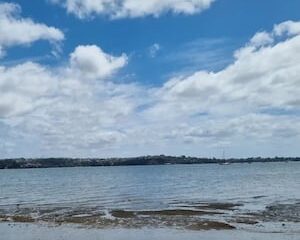Science
New Laser Research Project Launches to Study Aerosols in New Zealand

A new atmospheric research project, known as the goSouth-2 project, is set to launch on September 3, 2023, at the MetService site near Invercargill Airport. This initiative aims to gather critical data on how aerosols—tiny airborne particles—affect the atmosphere. The project represents a collaborative effort between institutions from Germany and New Zealand, including the Meteorological Institute of the University of Leipzig, the Leibniz Institute for Tropospheric Research (TROPOS), and the University of Canterbury alongside The Air Quality Collective.
Researchers from TROPOS have begun setting up equipment at the MetService site to facilitate this vital research. Five team members are on the ground, preparing for the project’s official commencement. Patric Seifert, a researcher from TROPOS, emphasized the significance of aerosols, which can originate from various sources on land and sea, including salt, dust, pollen, and smoke from wildfires or volcanic eruptions. He noted that these particles play a crucial role in cloud formation, serving as nuclei for cloud droplets.
The unique geographical position of New Zealand’s southern tip, adjacent to the Southern Ocean, presents an exceptional opportunity for studying the relationship between aerosols and clouds. According to Dr Seifert, the atmosphere in this area can be remarkably clean when influenced by air masses from Antarctica. Conversely, air masses arriving from Australia can bring higher levels of pollution. This variability allows researchers to analyze how differing aerosol concentrations impact cloud development.
He further explained that atmospheric and climate models have historically struggled to accurately simulate cloud behavior over the Southern Ocean compared to the northern hemisphere. The disparity in aerosol levels between the two hemispheres might account for these differences in model performance. Currently, there is more extensive data available regarding atmospheric conditions in the northern hemisphere, which is generally more polluted.
Invercargill provides an advantageous location for this research, offering logistical support for the equipment and accommodations for the research staff. The MetService already conducts significant observational activities at the site, including long-term weather balloon soundings, precipitation measurements, and solar and thermal radiation data collection.
While the primary instruments for data collection are land-based, residents near Invercargill Airport may notice a green laser beam in the sky. Dr Seifert explained that the lidar (light detection and ranging) system employed by the researchers emits laser pulses to investigate the aerosol content in the atmosphere. The beam is stationary, and local airport authorities have been informed of its presence. In addition to lidar technology, radar systems will be utilized to study clouds and precipitation patterns.
The TROPOS team is expected to remain at the site for 18 months, while data analysis will continue in Germany with a dedicated group of approximately 15 researchers. This effort builds upon the groundwork laid by the goSouth-1 project, a month-long study completed in 2022 at Pahia, located about 50 kilometers from Invercargill.
As the goSouth-2 project unfolds, it promises to enhance understanding of aerosols’ role in atmospheric processes, potentially leading to improved climate models and insights into how clouds respond to varying aerosol levels.
-

 World1 week ago
World1 week agoPrivate Funeral Held for Dean Field and His Three Children
-

 Top Stories2 weeks ago
Top Stories2 weeks agoFuneral Planned for Field Siblings After Tragic House Fire
-

 Sports3 months ago
Sports3 months agoNetball New Zealand Stands Down Dame Noeline Taurua for Series
-

 Entertainment3 months ago
Entertainment3 months agoTributes Pour In for Lachlan Rofe, Reality Star, Dead at 47
-

 Entertainment2 months ago
Entertainment2 months agoNew ‘Maverick’ Chaser Joins Beat the Chasers Season Finale
-

 Sports3 months ago
Sports3 months agoSilver Ferns Legend Laura Langman Criticizes Team’s Attitude
-

 Sports4 weeks ago
Sports4 weeks agoEli Katoa Rushed to Hospital After Sideline Incident During Match
-

 Politics2 months ago
Politics2 months agoNetball NZ Calls for Respect Amid Dame Taurua’s Standoff
-

 World2 weeks ago
World2 weeks agoInvestigation Underway in Tragic Sanson House Fire Involving Family
-

 Top Stories2 weeks ago
Top Stories2 weeks agoShock and Grief Follow Tragic Family Deaths in New Zealand
-

 Entertainment3 months ago
Entertainment3 months agoKhloe Kardashian Embraces Innovative Stem Cell Therapy in Mexico
-

 World4 months ago
World4 months agoPolice Arrest Multiple Individuals During Funeral for Zain Taikato-Fox




















